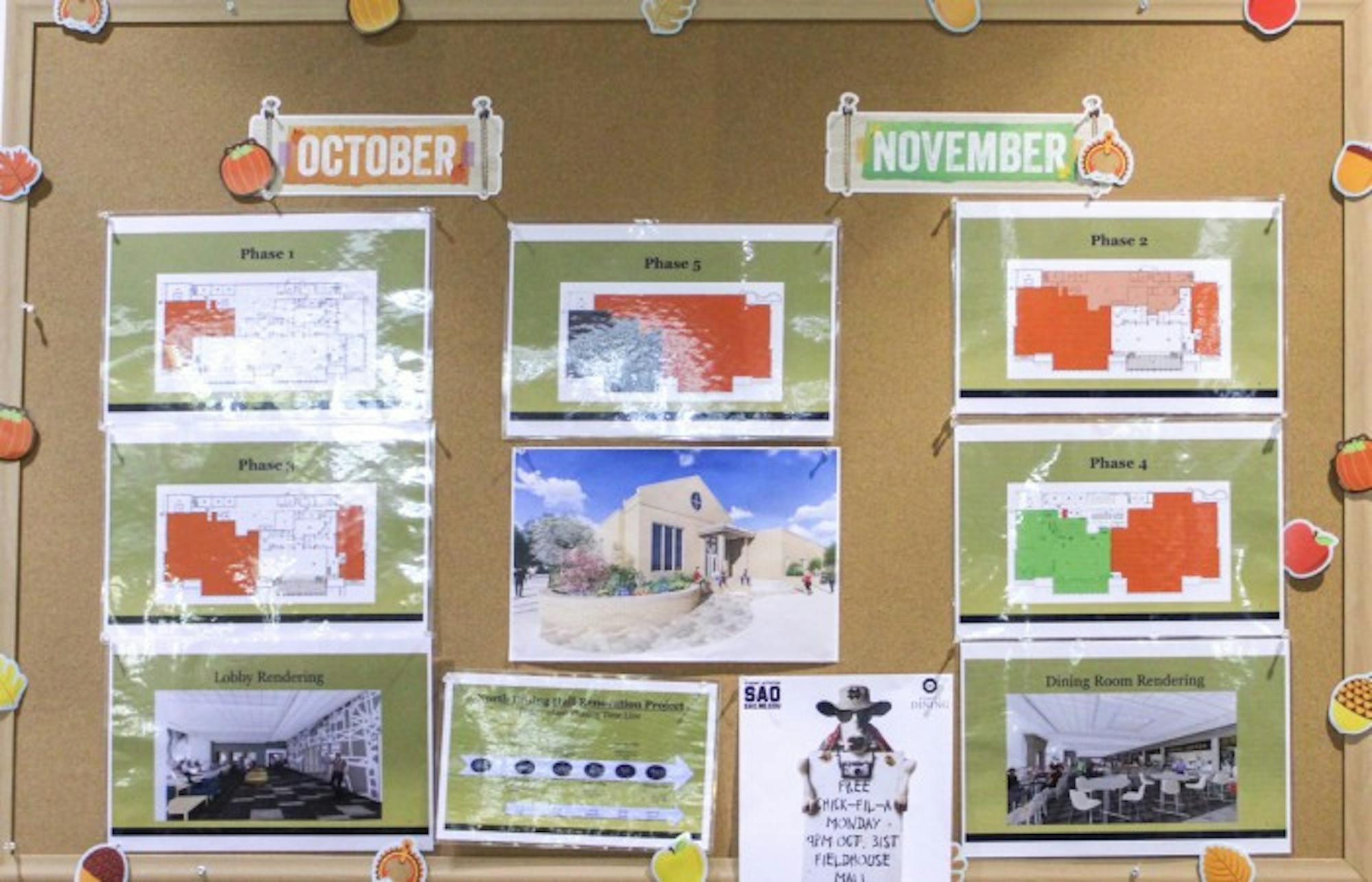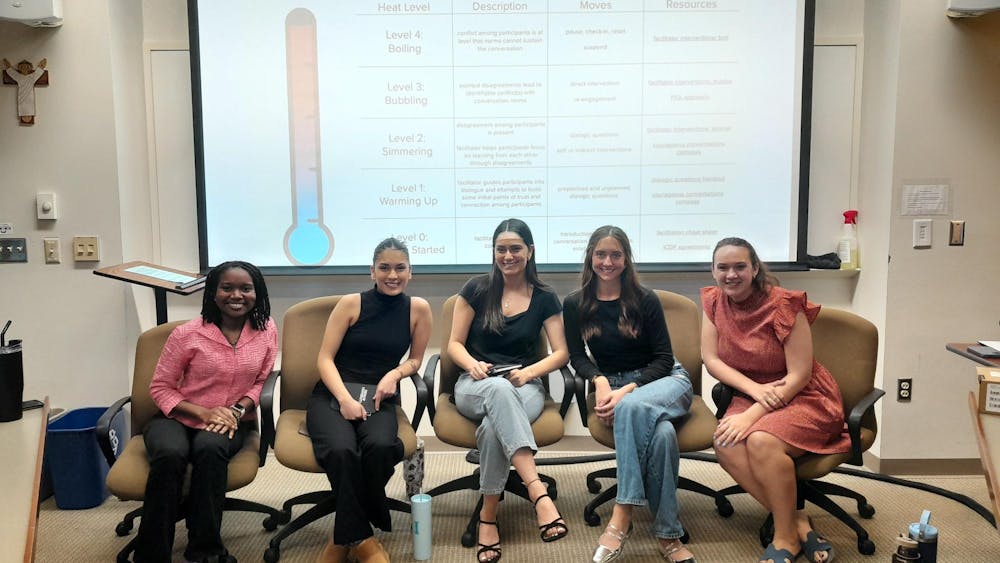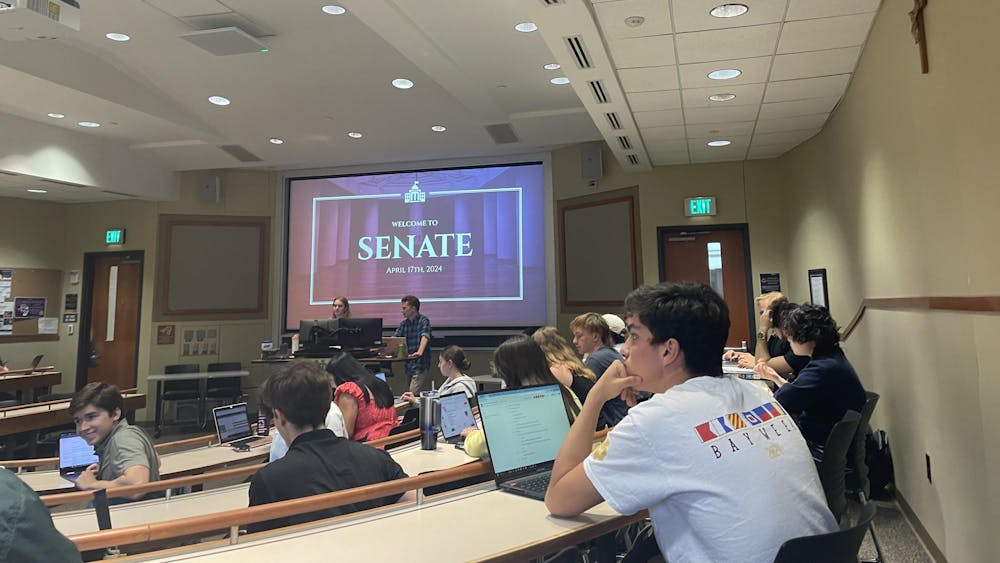As students enter the last couple weeks of the fall semester at Notre Dame, many are starting to spend their last few Flex Points at the Huddle, Starbucks and other on-campus eateries.
Next semester, however, they may not encounter the same problem. Each student living on campus will receive an additional $250 in Flex Points due to large-scale renovations to North Dining Hall (NDH).
Chris Abayasinghe, director of Campus Dining, said since the seating at NDH will be compressed starting in January, he needed to find ways to give students alternative meal options during peak dining hours.
“We wanted to be thoughtful in providing options,” he said. “Because we understand that North Dining Hall’s your dining hall.”
After examining dining behavior in previous spring semesters, Abayasinghe said Campus Dining was able to predict the times when the renovation project will impact student life the most — around dinnertime on weekdays, from 5 p.m. to 6 p.m.
“Students will probably dine the way they normally dine for breakfast,” he said. “I think they’ll dine the way they normally dine for lunch because some of it is based on proximity, and the other part of it is based on routine.”
The change will probably affect dinner, Abayasinghe said, because students tend to eat at the dining hall closest to their residence halls in the evenings. So hopefully, he said, the additional Flex Points will allow students to dine at other on-campus locations if NDH is overcrowded.
Other campus eateries — like Taco Bell, Pizza Hut, Subway, Smashburger, Reckers and Au Bon Pain — have the capacity to handle an influx of students during dinnertime, Abayasinghe said, for they already receive much more traffic during the lunch hours.
“Based on this and based on our evaluation, we really feel that having these points will help shift some of that dinner traffic into the Huddle,” Abayasinghe said.
Campus Dining also plans to introduce a “continuous dining” system in both dining halls, so students can eat at any point in the day — not just during specified meal times.
“We understand that there is the potential for displacement,” Abayasinghe said. “But we anticipate that — especially at dinner, when the compression happens — that we have the capacity to handle it.”
Right now, most on-campus students are registered for the Gold meal plan, which provides them with up to 14 meals in the dining hall each week and $410 Flex Points each semester. All students paying housing fees receive a meal plan through Campus Dining with no additional charges.
Funding for the increase in Flex Points will be included in the multi-million dollar renovation project budget. Abayasinghe said Campus Dining decided not to reallocate the money for some of students’ weekly meal swipes to Flex Points because they didn’t want to limit dining options even more.
Fifth-year Tom Nye, a member of the Executive Advisory Committee for the NDH renovation project, said he appreciates that — because he thinks the Notre Dame community places a value on eating together.
“It’s so much a part of life on and off campus, but especially when it takes place in the dining hall,” he said. “I think that would be another driving factor of how seriously Campus Dining considered the potential crunch.”
Students living off campus — even those with meal plans — will not receive extra Flex Points, Abayasinghe said.
“Let’s say, for example, you have a block plan with certain points,” Abayasinghe said. “We’ve provided them as a convenience for students to dine while they’re on campus. But we acknowledge that students who are living off campus also eat off campus — have kitchen facilities and things like that.”
“From that perspective, in the scope of this and based on the feedback through the committees, we really looked at focusing on the on campus students,” he added.
Nye, a resident assistant in Dunne Hall, said he also thinks off-campus students frequent the dining halls for lunch more often than they do for dinner.
“The crunch at dinner — I would add that that’s the time your residence hall plays the greatest role,” he said. “I live in Dunne, where I’m more likely to go to North at night. Where at lunch, I’m an archie, I’m more likely to go to south. The data sort of proved the anecdotal evidence that that would be the general trend.”
Nye said providing students with a higher amount of Flex Points will allow them to dine at places they would now frequent if the dining hall is closed or too busy.
“I think now with a smaller capacity at North, you’d more frequently go to these places anyway,” he said “And I think Campus Dining recognizing that is pretty thoughtful. It’s a way to alleviate any sort of impact that would affect the students due to this necessary construction.”
And hopefully, the end result will be well worth the hassle, Abayasinghe said.
“When that new dining hall opens — wow,” he said. “That’s all I can say.”













